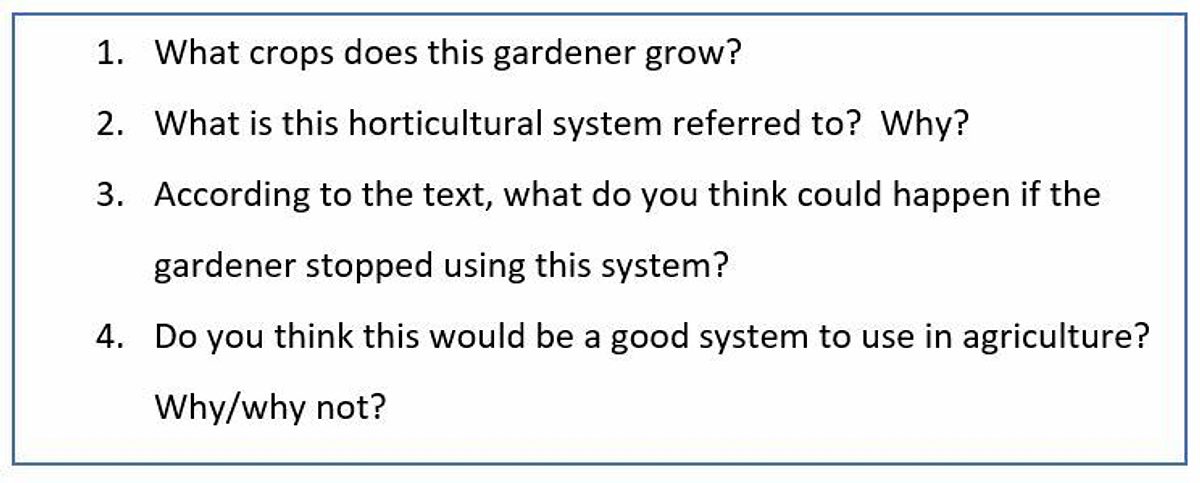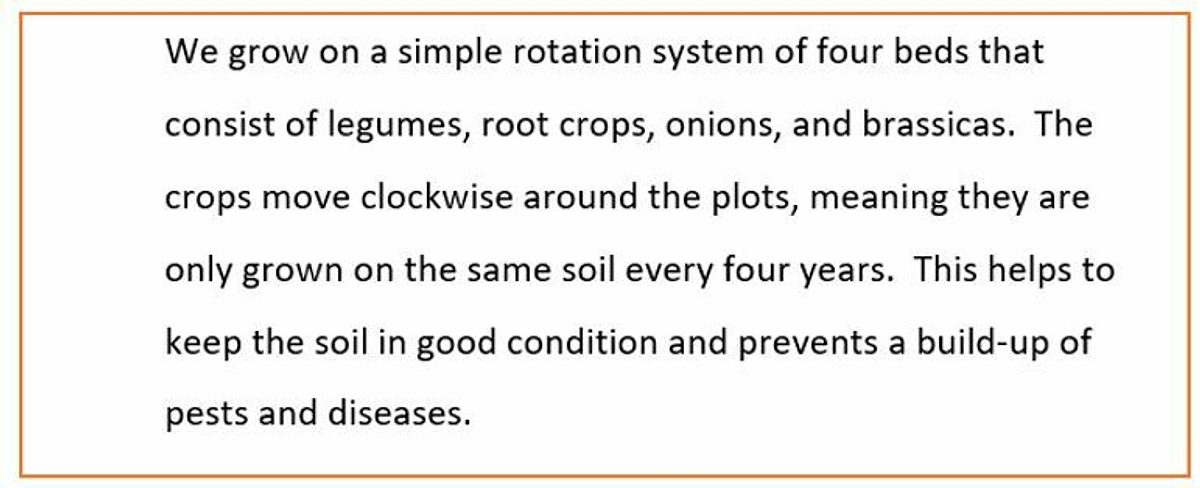“To grasp the words on a page we have to know a lot of information that isn’t set down on a page.”
E.D. Hirsch
In my spare time, I am an aspiring gardener. Have a read of this snippet from a well-thumbed book on my shelf, Gardening on the Menu, by Martin and Jill Fish:

As a proficient reader, no doubt you’ll have developed some strategies to help you comprehend texts.
You might ask questions and clarify details, as you read.
You can summarise what you’ve read.
When you read, you automatically activate prior knowledge and experiences that help you infer and elaborate upon the information provided.
Let’s test your understanding, then. I’ll ask you now to use your established comprehension strategies to answer some questions:

Rethinking Reading Comprehension Strategies
Perhaps you might like to try those questions again! This time, I’ll be a little kinder and provide you with the full snippet, without any omissions:

If you read the first passage as an avid allotment gardener, then you might have been able to guess the missing words. Perhaps you had a good stab at our comprehension questions the first time around.
However, the chances are that most of us would answer the questions more easily (and more accurately) with the full passage in front of us – regardless of how well-developed those reading comprehension strategies of ours are.
When I think about classes I’ve taught, it’s clear to me that there have been many lessons where my pupils might have felt like they were being tested on the first passage.
My last Year 6 class would have known soil, I think – but brassicas and legumes? Rotation system? Pests? Straightaway, I can think of pupils who wouldn’t have known these words and concepts.
Building Background Knowledge and Reading comprehension Strategies
Plenty of research shows that teaching comprehension strategies as part of a brief, targeted sequence of instruction has a positive impact on pupils’ reading comprehension. However, it is all too easy to forget the importance of the breadth of knowledge required for a reader to use these strategies effectively.
Professor Dan Willingham suggests that teaching our pupils strategies like summarisation, clarification and activating prior knowledge ‘undeniably works’. However, he stresses that an overemphasis of comprehension strategies can lead us to spend whole terms drilling pupils on how to summarise texts they don’t understand, or ask inferential questions without teaching the vocabulary, structures, and background knowledge they need to access the text.
Instead, he suggests that our time is far better spent on ‘generative vocabulary instruction, deep content exploration, and opportunities for reading across genres and content areas.’
In other words, strategies are helpful techniques that we can quickly model, but they are not to be confused with skills that we can teach without background knowledge. Instead, we might better support our pupils to become skilled and successful readers by also building the knowledge they need to comprehend a broader range of texts.
Reading comprehension strategies should be wedded to the content of the text being read, such as making predictions about a story, or clarifying vocabulary in a tricky passage from the science textbook. Teaching isolated lessons on ‘making predictions’ or ‘summarising’ is unlikely to offer pupils the tools to read successfully, if they are not carefully wedded to building knowledge (such as gardening, or whatever topics that text is about).
What are some principles for classroom practice?
We can avoid falling foul of the traps Willingham identifies with the EEF’s Literacy Guidance Reports which offer robust, evidence-informed principles to put into practice:
1. “Teachers should prioritise teaching Tier 2 and 3 vocabulary, which pupils are unlikely to encounter in everyday speech.”
Teaching the meaning and varying usage of words, including through explicit instruction, helps to build pupils’ knowledge of vocabulary needed to access a broad range of texts. See our Vocabulary in Action poster for practical activities for the classroom, as well as some common misconceptions about vocabulary teaching.
2. “To comprehend texts, pupils need to actively engage with what they are reading and use their existing subject knowledge.”
Approaches that develop our pupils’ schemas can help teachers to assess, organise and present the knowledge needed for accessing texts, across the curriculum.
3.Texts should be carefully selected to support the teaching of broad, rich knowledge, with comprehension strategies serving as supports to tackle that complexity and richness.
Text selection can have a significant impact, both on pupils’ abilities to use comprehension strategies, and on opportunities to build new knowledge.
References
Hirsch, E. D. (1988). Cultural Literacy: What Every American Needs to Know. Houghton Mifflin Harcourt
Willingham, D. T., & Lovette, M. M. (2014). Can Reading Comprehension Be Taught? Harvard Education Letter, 30(5). http://www.danielwillingham.com/uploads/5/0/0/7/5007325/willingham&lovette_2014_can_reading_comprehension_be_taught_.pdf
